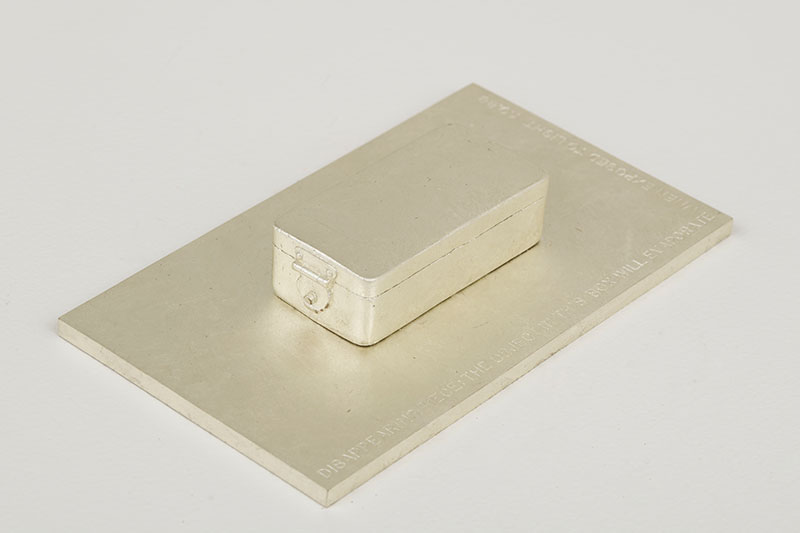Minimalism, as Robert Hughes remarked, was the last great “ism” in contemporary art. It was perhaps defined best in the writings of Donald Judd (who hated the term), and in a few of Judd’s interviews from the 1970s. What seem significant in these are his ideas regarding form and composition, which have to do with an extrapolation of the overall wholeness one sees in the work of Jackson Pollock, whom Judd revered above all other artists because of this quality. This approach to design became a hallmark of Minimalism, important because it was a departure from the more relational approach of European abstractionists such as Mondrian. It embraces symmetry or a pattern-like repetition rather than balancing forms in relation to each other to create a final resolution. This simple concept became a veritable watershed for sculpture from the 1960s on.
Much of the work in the splendid group exhibition Elemental at LA Louver gallery can be considered in relation to this concept. The stunning installation, in which most of the works by the 14 artists included can be viewed together as a whole, recalls classic installation photographs of historic minimalist exhibitions from the 1960s. There is something remarkably compelling about seeing the work of like-minded artists of quality in formal relation to each other—it tends to foster our understanding of the work of the individual artists. Particularly intriguing are the juxtapositions of contrasting materials, such as seeing the serpentine stone sculpture of Richard Long in relation to the synthetic looking urethane wall pieces of Peter Alexander, and the shiny stainless steel of a cage-like Richard Deacon sculpture. The Deacon piece is one of a few in the exhibition that seems more rooted in the European tradition of constructed sculpture that descends from Picasso, rather than the more recent anti-compositional approach characterized by Minimalism.
Another interesting comparison is had with Carbon Quarry (2004) by Carl Andre, one of the artists first associated with Minimalism, and a work in concrete block by Adrian Paules, clearly influenced by Andre. Quarry, which takes its shape from the corner of the gallery, is classically minimalist, while the Paules, which also employs repetition of individual units, is more of a balancing act, literally and figuratively.
Fabrice Samyn and Yoko Ono both engage in post-modern riffing on Minimalism’s objectness, introducing futility into attempts to capture and preserve the immaterial. Samyn’s Dust of Breath, (2010) uses dust to preserve a breath onto a minimally designed round mirror, while Ono’s Disappearing Piece(1965, cast 1988) is a bronze box which supposedly contains an object that will disappear if you open the box. Naturally, the work of both artists recalls that of Duchamp, such as With Hidden Noise (1916). Lastly, the work of Peter Shelton and Nathan Mabry straddle a line between abstraction and figuration, still fertile territory in sculpture. Shelton’s two works occupy a room of their own, creating an interesting tension between the suggestive anthropomorphic forms; their isolation from all of the sculptural activity in the main gallery creates a serene environment in which the powerful presence of the forms can speak.




















0 Comments